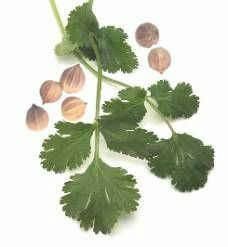
At first glance, the green of coriander can be taken for parsley, but the wonderful specific smell and a special shade of green, characteristic of this plant, immediately shows that we have another spice. For many centuries of use, mankind has determined the beneficial properties and contraindications of coriander and came to the conclusion that this is a very valuable and useful plant.
Various people use it for food, but coriander is especially popular in Mediterranean, Indian, Central Asian, Far Eastern and Caucasian cuisines.
History of coriander
The first signs of the existence of coriander as a cultural plant can be found in ancient Egypt. During the excavations, the seeds of this plant were found - this suggests that the Egyptians were cultivating it and applying it for food.
Particularly widely coriander as a seasoning found use in Roman cuisine. Together with these mighty conquerors, the plant spread to many countries and ended up in Britain. The Romans loved to eat deliciously and abundantly and knew the sense in spices. Imitating the conquerors, local people began to use this spice together with the rest of the imported plants.
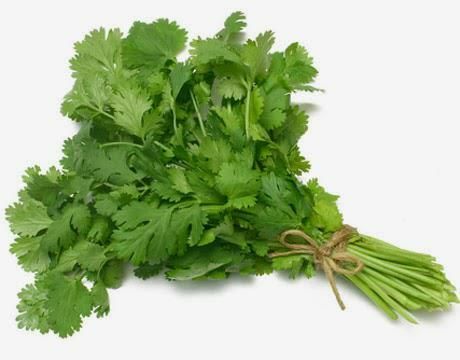
Gradually it spreads almost all over the world. In Russia, this plant is used selectively, only in the X | X century, began industrial planting.
Currently, coriander is well known and popular, especially in marinades, various spicy pastes, sauces and dry mixes.
Note! Coriander is widely used in folk medicine, as well as in perfumery, cosmetics, soap making, it even found its place in the textile industry and agriculture.
Coriander or coriander?
Often one has to deal with the different names of this plant - some call it a coriander, and others call it cilantro. Both that, and another is true, it is simple, this plant is called cilantro in the Caucasus, where it is an indispensable part of any feast, especially when meat is served on the table. Currently, cilantro is usually called the green part of the plant( grass), and coriander - seeds or dry ground seasoning of them.
Application of coriander
Kinza and its use
Considering the photo of coriander, many will say that it looks like parsley with its beautiful carved leaves. They have a more rounded form than parsley and are more tender than this popular plant.
Interesting fact! The aroma of cilantro can not be liked by everyone from the first time, it is quite specific, because even the name of the herb comes from the word "bug" associated with the smell of an immature seed.
Nevertheless, the coriander is a wonderful companion of various sauces and cold dishes, and in the Caucasus it is served with the rest of the greens as a mandatory addition to all dishes along with pita bread.
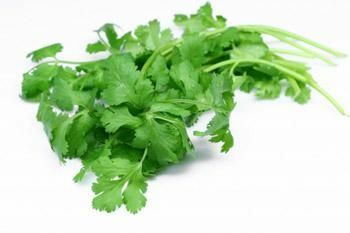
Cilantro has a tender structure and is mostly used fresh. Useful properties of the green part of the coriander disappear with a long cooking, as well as the flavor is lost, so the coriander is rarely dried, and added to the soup at the last minute. As an additive, several branches of cilantro are introduced into the "bouquet of garnishes", but not too much, so as not to smell the smell of other ingredients.
Coriander seeds - whole and ground
The most common application of coriander in cooking is the use of its seeds in various kinds.
- Whole seeds. Most often, coriander is used as a seasoning of various marinades and mixtures for pickles, especially fatty meat varieties. Its smell perfectly combines with other fragrant plants, making food not only tasty, but also fragrant. Roughly ground seeds are used as a sprinkling of various baked goods, for example, Borodino bread.
- Ground coriander implies a wider use. Solo or in the mixture they sprinkle meat when frying and putting out, add to cheeses, sausages, sauces, canned food and confectionery. It is made of special pasta with spices, which are used as thick sauces for cooking or use as a snack. As a spice, coriander is very widespread.
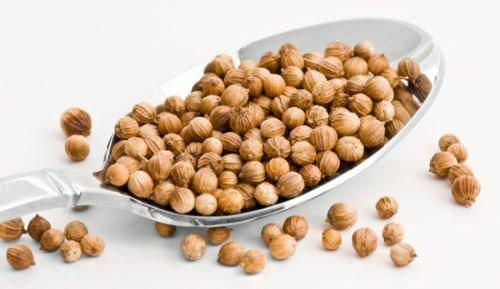
Application of coriander in medicine and cosmetics
Even in ancient times, our ancestors noticed that the seeds of coriander, in addition to flavor and taste, also have medicinal properties. They act particularly well as an analgesic and disinfectant for various lesions of the gastrointestinal tract. This area of healing plants is not limited - they catarrh of the upper respiratory tract, as well as such serious eye diseases as keratitis and glaucoma. Also, the seeds in the ground form are used for flatulence and against worms.
Coriander oil has found application in cosmetics. Its ethereal part goes to the needs of the perfume and cosmetic industry to create various fragrances, and the remaining oil is used in soap making. This is practically a non-waste production - oil cakes are nutritious and sent to feed birds and cattle.
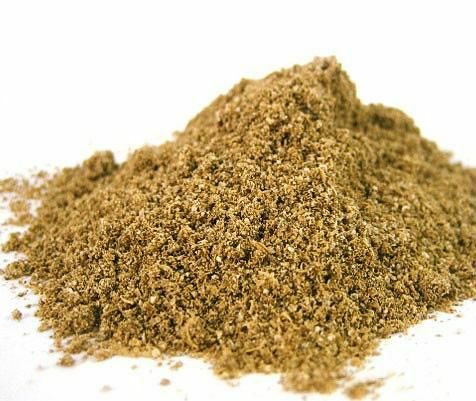
Does coriander harm?
The listing of what is useful for coriander will take more than one page. This plant is extremely rich in vitamins, in particular, vitamin C, and healing essential oil, other useful substances. But often the question arises, can it harm a person? Any unreasonable use is harmful, something that is pleasant and useful in normal quantities, in large quantities can seriously affect health.
Important! Uniquely, you should not use this spice only for people who are allergic to it or as prescribed by a doctor.
All the others will decide for themselves what benefit and harm it brings to them coriander.
This ancient plant has a long history and I want to believe that it will have as long a continuation.
On how to grow organic coriander on your terrace, you can learn from the video:
